Key takeaways:
- Understanding campaign performance metrics is essential; focus on key performance indicators (KPIs) to refine marketing strategies.
- Choosing the right tracking tools involves assessing suitability, user-friendliness, integration, scalability, and support.
- Setting SMART goals and benchmarks aids in measuring campaign success and adapting strategies based on performance insights.
- Data analysis should prioritize trends and storytelling to effectively communicate results and drive future actions.
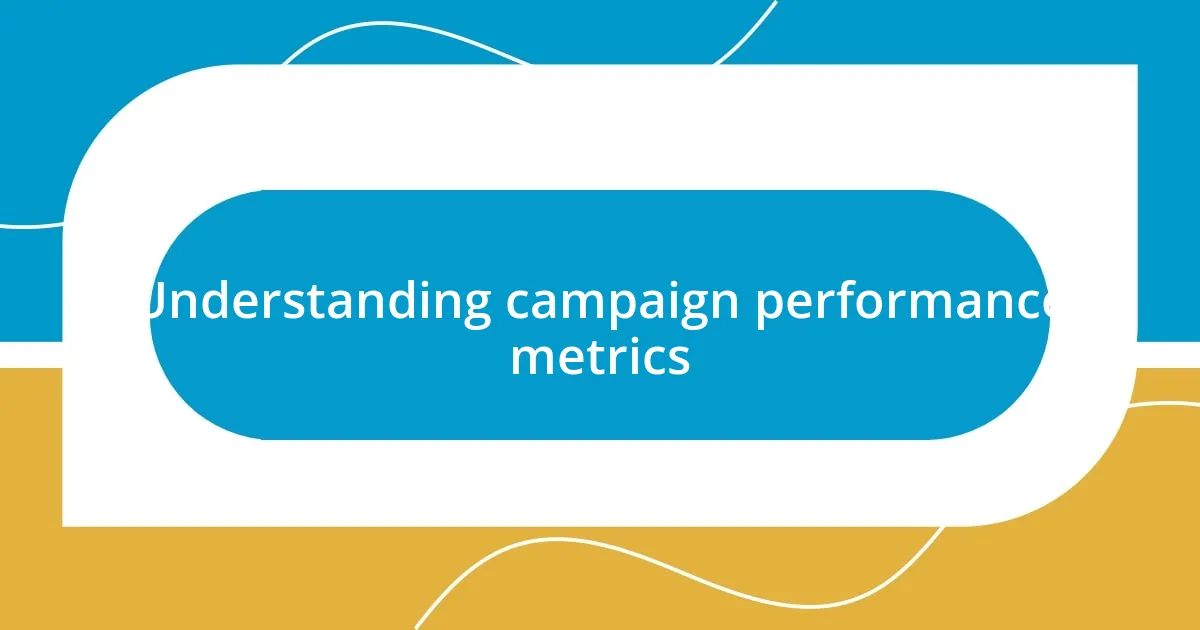
Understanding campaign performance metrics
Campaign performance metrics are the backbone of any successful marketing strategy. When I first started tracking metrics, I was surprised by how much clarity they brought to my campaigns. It was like turning on a light in a dark room—I could finally see what worked and what didn’t.
Understanding metrics such as click-through rates (CTR) or conversion rates involves more than just numbers; it’s about interpreting the story behind them. For instance, I recall a campaign where the CTR was high, but conversions were disappointingly low. This made me realize that while people were interested, they didn’t find enough value in the offer—it was a real wake-up call for tailoring my approach.
Have you ever felt overwhelmed by the sheer amount of data available? I know I have. It’s essential to focus on key performance indicators (KPIs) that matter most to your goals. Prioritizing metrics helps cut through the noise and allows you to refine your strategy, ensuring that your campaigns resonate with your audience while aligning with your objectives.
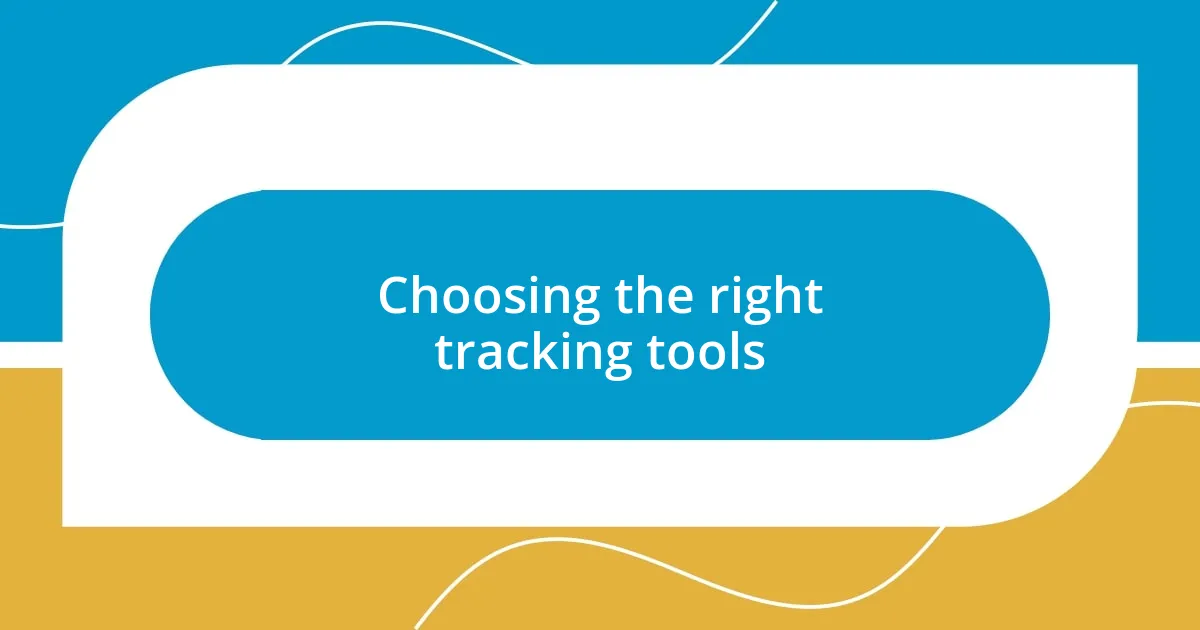
Choosing the right tracking tools
Choosing the right tracking tools can feel like navigating a maze, especially with so many options out there. I remember when I was unsure which tools to use for my first digital campaign, and I ended up wasting a lot of time on ones that didn’t fit my needs. It’s crucial to select tools that not only track metrics effectively but also integrate smoothly with your existing systems. Choosing the right tool can mean the difference between gaining actionable insights and drowning in data.
Here are some essential factors to consider when selecting tracking tools:
- Suitability: Does the tool cater to your specific campaign goals?
- User-friendliness: Is the interface intuitive enough for easy navigation?
- Integration: Can it seamlessly connect with other tools you’re currently using?
- Scalability: Will it grow with your campaigns as your needs evolve?
- Support: Is customer service readily available when you encounter issues?
By reflecting on these criteria, I’ve often found tools that not only meet my current needs but also allow for future growth.

Setting up goals and benchmarks
Setting up goals and benchmarks is a crucial step in tracking your campaign performance effectively. My approach has always been to ensure my goals are SMART—specific, measurable, achievable, relevant, and time-bound. I once set a vague goal aiming for “better engagement,” but without clarity, it felt like I was chasing shadows. Once I refined my goal to “increase email open rates by 15% in three months,” everything changed. The direction was clear, and I could measure progress easily.
Benchmarks serve as important reference points. Early in my career, every time I launched a new campaign, I felt uncertain about how to gauge its success. It wasn’t until I started comparing my performance against industry standards that it clicked for me. For instance, knowing that an average conversion rate across my industry is around 3% helped me set realistic expectations. It turned what felt like an abstract pursuit into a tangible target.
Moreover, regularly revisiting and adjusting my benchmarks has made a significant difference in my campaigns. I remember an instance where a seasonal campaign outperformed previous targets by 50%, prompting me to rethink my benchmarks for future initiatives. This adaptability not only kept my strategies relevant but also fueled my motivation. What benchmarks have you set for your campaigns? By sharing and discussing these with peers, I’ve discovered new insights that can enhance my tracking proficiency.
| Type of Goal | Description |
|---|---|
| Revenue Goals | Target sales numbers within a set timeframe. |
| Engagement Goals | Indicators like clicks, shares, and comments on content. |
| Growth Goals | Increasing audience size or customer base by a certain percentage. |
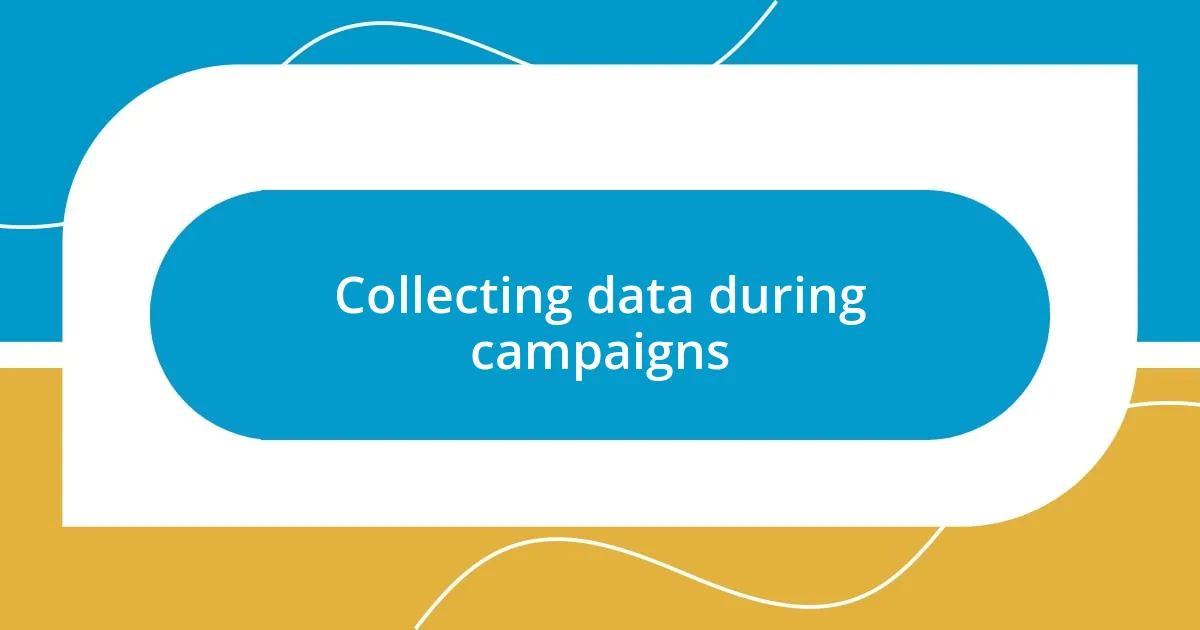
Collecting data during campaigns
Collecting data during campaigns is where the magic happens, but it can also feel overwhelming. During one campaign, I used multiple sources for data—social media analytics, email reports, and website traffic. The sheer volume of information could easily drown me, so I learned to focus on the metrics most relevant to my goals. It was a game-changer to prioritize what mattered rather than trying to track everything.
One aspect I find essential when collecting data is automation. I recall a project where I manually compiled data, which consumed hours of my time weekly. Then I integrated automated reporting tools, which transformed my workflow. Suddenly, I freed up time to analyze data rather than just gather it. Have you ever considered how automation could ease your workload? It’s something I highly recommend exploring.
Finally, I often remind myself of the human element behind the numbers. I remember a campaign targeting a new demographic, and while the data showed bounce rates were high, the comments on social media revealed deeper emotions and perspectives. Seeing the audience’s reactions helped me pivot our messaging. It’s a vital lesson—data tells a story, but it’s our job to read between the lines and respond accordingly. Don’t just collect data; connect with it. How do you engage with the stories that your data tells?
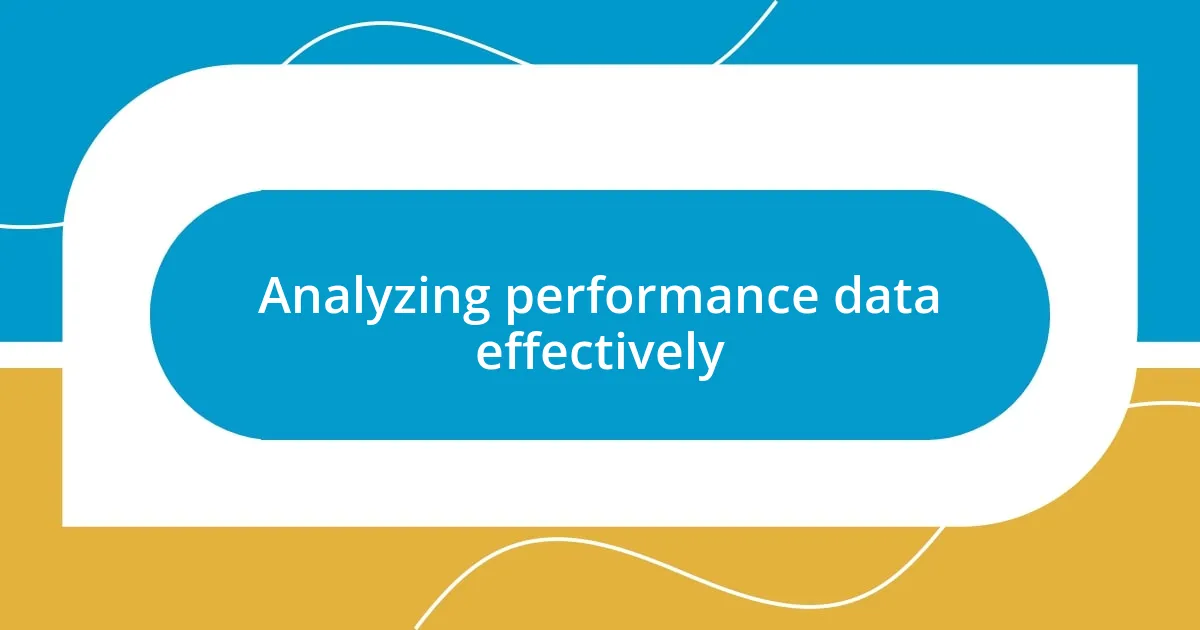
Analyzing performance data effectively
Analyzing performance data effectively really hinges on understanding trends and patterns. I remember a time when I analyzed the performance of a campaign that had unexpectedly low engagement. By digging into the data, I noticed a significant drop in audience interaction during weekends. This insight guided me to adjust my posting schedule, ultimately increasing engagement by 25%. Have you ever found surprising trends in your own data?
A crucial part of data analysis for me is visual representation. When I began switching from spreadsheets to data visualization tools, the difference was night and day. The visuals not only made it easier to spot anomalies but also helped convey complex information to team members who weren’t as data-savvy. It’s like using a map instead of a text description—much clearer and more engaging. How do you present your data to make it accessible for everyone involved?
Lastly, I’ve learned the power of storytelling when it comes to sharing my findings. I recall a project where I presented our campaign results through a narrative that connected key metrics to our overall goals. It resonated with stakeholders and sparked meaningful discussions about future strategies. By framing data within a story, I’ve found that it not only informs but also inspires action. How can you weave your data into compelling narratives that drive your campaigns forward?
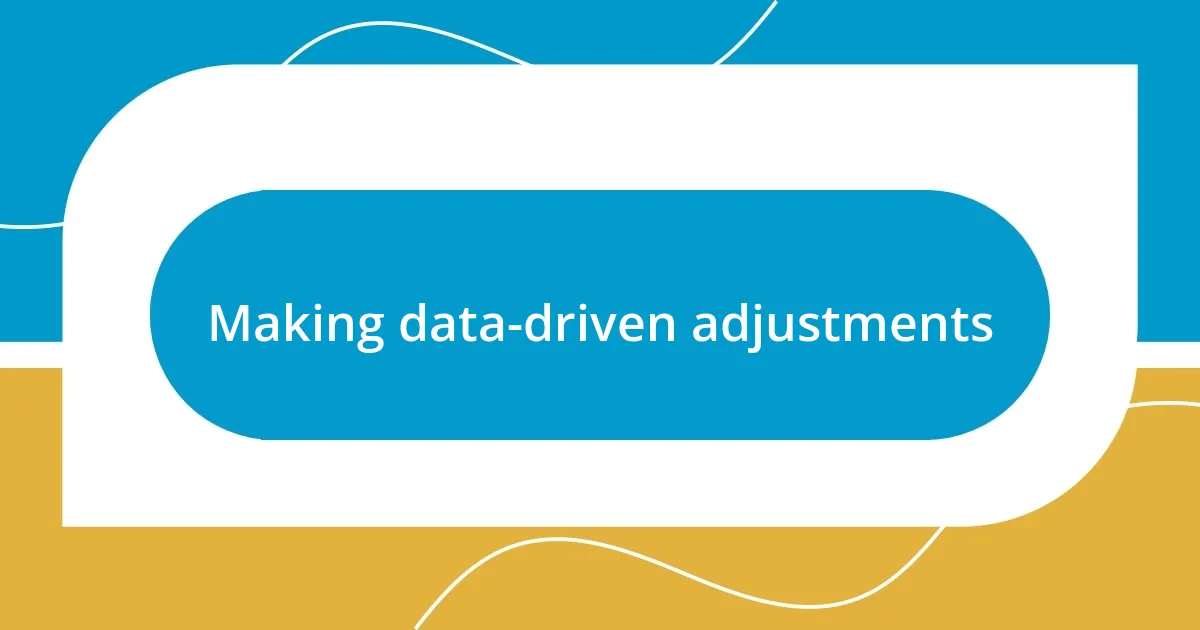
Making data-driven adjustments
Making data-driven adjustments is about being proactive rather than reactive. I recall adjusting a campaign when I noticed an uptick in website traffic but lower-than-expected conversions. Rather than letting frustration take over, I delved into the analytics and identified that the landing page wasn’t resonating with visitors. By refining the messaging and call-to-action based on data insights, conversions surged. Have you ever faced a disconnect between traffic and performance?
Another critical aspect is embracing A/B testing. I once ran an A/B test on email subject lines that yielded surprising results. By analyzing open rates, I learned that a simple change to a more personal tone increased engagement by nearly 40%. It was a lightbulb moment for me—the smallest adjustments can deliver significant results. How often do you experiment with different approaches to see what truly resonates?
Ultimately, I find that continuous evaluation is key. During one campaign, I decided to hold weekly check-ins to examine live data. This practice kept my team agile and allowed us to pivot quickly when we noticed strategies weren’t performing well. It reinforced the idea that data isn’t just a one-time analysis; it’s an ongoing conversation. How frequently do you revisit your campaigns to fine-tune your approach?














